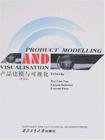产品建模与可视化
出版时间:2008-3 出版社:西北工业大学出版社 作者:阎秀天,(英)雷曼(Pehman,F.),(英)佩斯(Pace,C.) 编 页数:190
内容概要
Computer product modelling is used to represent the idea/final design of a product using computer graphics in a digital environment.Modern computer modelling methods and techniques not only provide platforms where designers can visualise,evaluate and appreciate their designs geometrically even before they are manufactured,but they also can simulate the performance and functionality of the final manufactured product in the digital computerised environment.These techniques help the designers in not only identifying the problems and correcting them but also optimising their design with specific goals and objectives.Therefore it is absolutely imperative to have a basic understanding and to know and be able to use modern tools and techniques of computer based product modelling,simulation and visualization in order to benefit from these advancements.
书籍目录
1 Computer Modelling Environment & its Effect on Product Development 1.1 Product Development 1.2 Phases of Product Development 1.3 Modelling 1.4 Use of Computer Modelling in Product Development 1.5 Concurrent Product and Process Modelling 1.6 Simulation through Computer Modelling2 Function Modelling Techniques 2.1 What is Function? 2.2 Functions in Mechanical Design 2.3 Function Modelling Techniques 2.4 Input-Output Representation 2.5 Bond Graph Representation 2.6 Qualitative Physics Representation 2.7 Function Diagram Representation3 Geometric Modelling 3.1 What is Geometry? 3.2 Topological Relationships 3.3 Dimensional Relationships 3.4 Foundations of Geometric Modelling 3.5 Use of Two Dimensional (2D) Computer Models 3.6 Use of Three Dimensional (3D) Computer Models 3.7 Computer Aided Design 3.8 Modelling Techniques in Computer Aided Design4 Finite Element Modelling and Analysis 4. 1 Finite Element Analysis 4.2 Applications of FEA Method 4.3 Foundations of FEA 4.4 Matrix Analysis 4.5 Matrix Operations 4.6 Origin of FEA field 4.7 Origin of Direct Stiffness Method (DSM) 4.8 Direct Stiffness Method 4.9 Finite Element Analysis Using Computer Based Tools5 Kinematic Analysis through Modelling and Simulation in Design 5.1 Introduction 5.2 Machines and Mechanisms 5.3 Kinematic Analysis and the Design Process 5.4 Solving the Vector Loop Equation -- Kinematic Simulations 5.5 The Four-Bar Linkage Mechanism 5.6 The Acceleration Kinematic Equations 5.7 Other Typical Closed Loop Kinematic Mechanisms 5.8 Kinematic Chains6 Dynamic Analysis through Modelling and Simulation in Design 6.1 Introduction 6.2 The Dynamic Analysis Process in Design 6.3 Physical Modelling: From the Actual System to the Physical Model 6.4 Making Approximations 6.5 A Summary of Choices for System Modelling 6.6 Equations of Motion: From Physical Model to Mathematical Model 6.7 Solving The System Equations: From Mathematical Model to Predicting Behaviour 6.8 The Vehicle Suspension Example Behaviour7 Simulation Fundamentals and Types 7.1 Simulation Definition 7.2 Use of Simulation 7.3 Computer Simulation8 Computer Graphics in Product Visualisation 8.1 What is Computer Graphics? 8.2 Graphics Pipeline 8.3 Process Detail of Graphics Pipeline 8.4 Display Stage in Graphics Pipeline 8.5 Animation in Computer Graphics
图书封面
评论、评分、阅读与下载
用户评论 (总计0条)
相关图书
- 大学计算机基础
- 多媒体技术及应用
- Visual Basic6.0程序设计基础教程
- 大学计算机基础实验指导与习题
- 大学计算机基础
- (特价书)2009全国二级建造师执业资格考试复习导航
- 2009注册环保工程师执业资格考试复习题集专业基础部分
- (土地管理基础与法规)2008全国土地估价师执业资格考试辅导与练习
- 过程控制与集散系统实验教程
- "问"系列 ·全国注册安全工程师执业资格考试名家答疑宝典
- 妇产科实习医师手册
- 工程力学实验
- 工程力学实验
- 货币银行学
- 节能概论
- 机电工程管理与实务考试精要
- 建设工程施工管理考试精要
- 建设工程法规及相关知识考试精要
- 快题设计表现
- 城市客运交通系统
- 历史城市保护学导论
- 我们的遗产,我们的未来
- 历史文化风貌区保护规划编制与管理
- 厚德尚医为生命之光
- 基础会计学训练与实验教程
